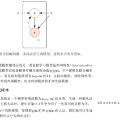A class of generative models that unifies flow-based and diffusion-based methods is introduced. These models extend the framework proposed in Albergo & Vanden-Eijnden (2023), enabling the use of a broad class of continuous-time stochastic processes called `stochastic interpolants' to bridge any two arbitrary probability density functions exactly in finite time. These interpolants are built by combining data from the two prescribed densities with an additional latent variable that shapes the bridge in a flexible way. The time-dependent probability density function of the stochastic interpolant is shown to satisfy a first-order transport equation as well as a family of forward and backward Fokker-Planck equations with tunable diffusion. Upon consideration of the time evolution of an individual sample, this viewpoint immediately leads to both deterministic and stochastic generative models based on probability flow equations or stochastic differential equations with an adjustable level of noise. The drift coefficients entering these models are time-dependent velocity fields characterized as the unique minimizers of simple quadratic objective functions, one of which is a new objective for the score of the interpolant density. Remarkably, we show that minimization of these quadratic objectives leads to control of the likelihood for any of our generative models built upon stochastic dynamics. By contrast, we establish that generative models based upon a deterministic dynamics must, in addition, control the Fisher divergence between the target and the model. We also construct estimators for the likelihood and the cross-entropy of interpolant-based generative models, discuss connections with other stochastic bridges, and demonstrate that such models recover the Schr\"odinger bridge between the two target densities when explicitly optimizing over the interpolant.
翻译:介绍了一类生成模型,它将基于流和扩散的方法统一起来。这些模型扩展了Albergo & Vanden-Eijnden (2023)提出的框架,使得可以使用一类称为“随机插值”的广泛的连续时间随机过程,在有限时间内精确地连接任意两个概率密度函数。这些插值是通过将两个指定密度的数据与额外的潜在变量相结合来构建的,从而以灵活的方式塑造桥梁形态。随机插值的时变概率密度函数被证明满足一阶输运方程,以及一族前向和后向Fokker-Planck方程,它们具有可调的扩散。考虑到单个样本的时间演化,这个观点立即导致基于概率流方程或带有可调噪声水平的随机微分方程的确定性和随机生成模型。这些模型中的漂移系数是时变速度场,特点是作为插值密度分数的最小者。值得注意的是,我们展示了这些二次目标函数的最小化会导致对基于随机动力学的任一生成模型的似然度的控制。相比之下,我们建立了基于确定性动力学的生成模型必须在此基础上控制目标和模型之间的Fisher差异。我们还构造了随机插值生成模型的似然度和交叉熵的估计器,讨论了与其他随机桥接的联系,并证明了这类模型在显式优化插值时恢复了两个目标密度之间的Schr\"odinger桥接。



